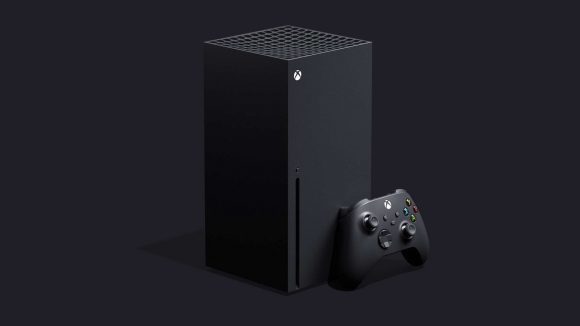Microsoft has lifted the lid on the specifications for the Xbox Series X, and it’s eye-opening for us PC gamers. With AMD at the helm of chip design, and bringing RDNA 2 to the party, the announcement from Xbox offers us a glimpse of what’s in store for PC gaming and our gaming PCs from team Radeon.
You may have heard the news already: AMD is delivering a GPU capable of 12 TFLOPs with the Xbox Series X. That’s the equivalent of Nvidia’s RTX 2080 Ti in raw compute, in theory, but let’s break down what that really means for AMD, RDNA 2, and potentially Big Navi.
While 12 TFLOPs is nothing to be sniffed at in regards to raw compute performance, it’s not representative of gaming performance. There’s a whole heap of architectural optimisations between compute capability and higher fps in-game. Take, for example, AMD’s RX Vega 64. This Vega GPU is rated to 12.66 TFLOPs (single-precision), roundabout on par with the proposed Series X GPU. By that metric, the Vega GPU should be up there with Nvidia’s RTX 2080 Ti upwards of 12-14 TFLOPs.
Yet the RX Vega 64 never gets close. That’s because the Vega architecture is GCN-based, and best suited to compute-focused tasks. In gaming tasks it requires optimisations to get up to speed, which few developers saw fit to introduce. Hence why RDNA was created – an architecture forked off from GCN and built from the ground up for gaming.
But herein lies the issue. We cannot say for sure how great an improvement RDNA 2 will be over Vega, nor how much performance its optimisations alongside TSMC’s 7nm+ process node will count for up against Nvidia Turing. Essentially, an apples to apples comparison is out of the question.
Rather, we can at least speculate as to the gaming performance versus the existing high-end RDNA graphics card: the RX 5700 XT.
Xbox series X GPU specifications
| Xbox series X | RX 5700 XT | RX 5700 | RTX 2080 Ti | |
| Architecture | RDNA 2 | RDNA | RDNA | Turing |
| CU/SMs | 48-56* | 40 | 36 | 68 |
| Cores | 3,072-3,584* | 2,560 | 2,304 | 4,352 |
| TFLOPs (single-precision) | 12 | 9.8 | 7.9 | 13.5 |
| Boost clock | N/A | 1,905MHz | 1,725MHz | 1,545MHz |
| *unconfirmed |
The RX 5700 XT peaks around 9.8 TFLOPs, and delivers performance somewhere between the RTX 2060 Super and RTX 2070 Super – depending on the game and API in use. It’s also some 12% faster across our benchmarking suite than the RX 5700, which sits at 7.9 TFLOPs compute performance.
By that logic, an RDNA GPU with 12 TFLOPs would manage performance capable of breaking into the upper echelons of Nvidia’s most expensive RTX 20-series graphics cards, and would be, at least, 12% faster than the RX 5700 XT. That would likely entail a GPU fit with either 48 or 56 CUs. The final clock speed of which is dependent on the total number of cores – roughly 1.6GHz would be required for a 56 CU GPU to hit 12 TFLOPs, or just under 2GHz for a 48 CU GPU.
But we also know AMD will be opting for the 7nm+ process node (N7+) from TSMC for RDNA 2, which promises moderate improvement to the existing 7nm node (N7) employed across AMD’s existing Ryzen and Navi lineup. Along with efficiency upgrades produced by the synergy between Radeon and Zen teams, we suspect the real deal to be some degree faster than that minimum 12% boon.
There’s also memory to consider. The Xbox Series X will come equipped with GDDR6, and we’d suspect that it will have plenty enough to tick over in the latest triple-A games without worry.
We can say that AMD is building a GPU that will at least challenge Nvidia in the high-end, and in such a way that Radeon has failed to do in recent years. Is this Big Navi? It’s looking very likely. That’s an exciting enough prospect alone, but there’s also further confirmation of variable rate shading (VRS) and hardware-accelerated ray tracing out of Xbox’s announcement, too.
All in all, the use of AMD technology in both the Xbox Series X, PlayStation 5, and whatever else they’re dreaming up over at Microsoft and Sony, can only be a boon to AMD’s Zen 2 and RDNA ecosystem. It looks like AMD will finally have a graphics card capable of competing with the very best from Nvidia, and we’re set to hear more about RDNA 2 come March 5. But don’t forget, the green team may have something special in store for later this year, too, in (name TBC) Nvidia Ampere.
Regardless, here’s to console manufacturers. Thanks for chucking tons of money at AMD, which, in turn, will make our gaming PCs all that much better.

